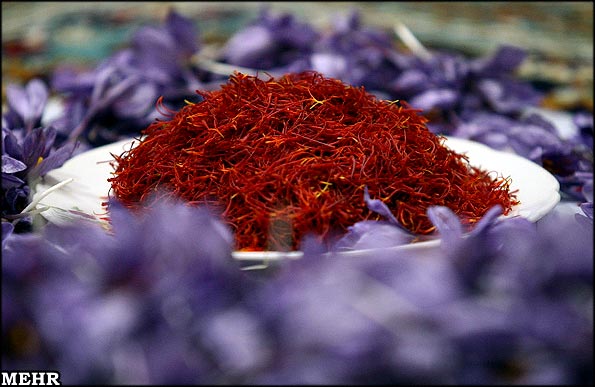 Iranian scientists have developed a novel method that could provide extraction of crocin from saffron for the first time.
Iranian scientists have developed a novel method that could provide extraction of crocin from saffron for the first time.The researchers produced crocin by cell culture method at the laboratory level at Iran�s National Nutrition and Food Technology Research Institute (NNFTRI).
Crocin, which is a natural carotenoid chemical compound, is responsible for the color of saffron.
Crocin has been shown to be a potent neuronal antioxidant. It also has some other medicinal uses such as antiproliferative action against cancer cells in vitro as well as antidepressant properties.
Saffron�s derivatives have wide applications in nutrition, pharmaceuticals, cosmetics and health industries, making it possible to generate added value, explained a member of the scientific board of NNFTRI, Dr. Seyyed Mahdi Ziaratnia.
�The research project was conducted to produce crocin from saffron in high amounts with lower costs in pharmaceuticals and related industries,� Ziaratnia also noted.
Saffron is a spice derived from the flower of the saffron crocus.
Iran, with its cultivation of different varieties and its diverse climate and fertile soil, is the largest producer of saffron in the world with around 90-93 percent of the world's total production.
Saffron has traditionally been known as having healing properties and used as a medicinal herb.
Several modern research studies have also hinted that the spice has possible anti-carcinogenic (cancer-suppressing), anti-mutagenic (mutation-preventing), immunomodulating, and antioxidant-like properties.
By Press TV
The Iran Project is not responsible for the content of quoted articles.










